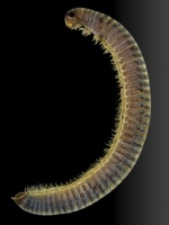Sep 5 2013
Only a fraction of the biodiversity on the planet is known to scientists and exploration of new places and habitats continue to yield exciting discoveries and new species to describe by taxonomists. This task is becoming increasingly urgent as a function of the continuous overexploitation of natural resources and destruction of habitats.
In fact, it has recently been estimated that it takes on average 21 years from the discovery of a species in nature to its formal scientific description. The 'shelf life' can sometimes be significantly longer, as for the millipede Ommatoiulus schubarti found in Spain in 1863 and just very recently described in 2012.

Illustrations constitute one of the fundamental bases of any taxonomic work, but they could often be misleading and generate problems of synonymy, the Achilles' heel of descriptive taxonomy. Thus, the demand for improving the quality of images and methods of visualization of taxonomic traits has significantly increased in the course of time, catalysed by the recent development of open access publishing. Interactive media illustrating important differences between species have the potential to further accelerate taxonomic works.
A paper, published in the open access journal ZooKeys, provides a modern revision of 12 millipedes of genus Ommatoiulus. The authors present an innovative illustration technique that allows the integration of scanning electron microscope images into an interactive rotatable model (rSEM) to visualize complex morphological features. This allows the structure in question to be seen from multiple angles of view. The development of rSEM is widely accessible, requiring no more than available scanning electron microscope and a software for image integration (Flash, Java Script based programs, etc.). The new illustrating technique can be viewed here. On the other hand, authors present a highly visual identification key to serve species identification. The key design prioritizes the visual delivery of taxonomic information via interactive media including line drawings, photographs and scanning electron micrographs of the most informative taxonomic characters in the studied group.
"Differences between species are often subtle, and the pronouncedly "3D" nature of their anatomy makes recognition of the differences difficult. In many older papers dealing with millipedes, authors have illustrated the copulatory organs as isolated pieces which has led to not only "angle-of-view" problems, but also to difficulties of relating the various components spatially to each other. By using rSEM, we have overcome these problems.", comments the lead author of the study Dr. Nesrine Akkari, Natural History Museum of Denmark.
The slow tempo of incorporating innovative methods in taxonomic research is very likely due to the perception that sophisticated imaging requires special software, e-infrastructure, and significant funding. The multimedia driven, interactive taxonomic paper by Akkari et al. demonstrates that much can be accomplished using accessible equipment and methodology.